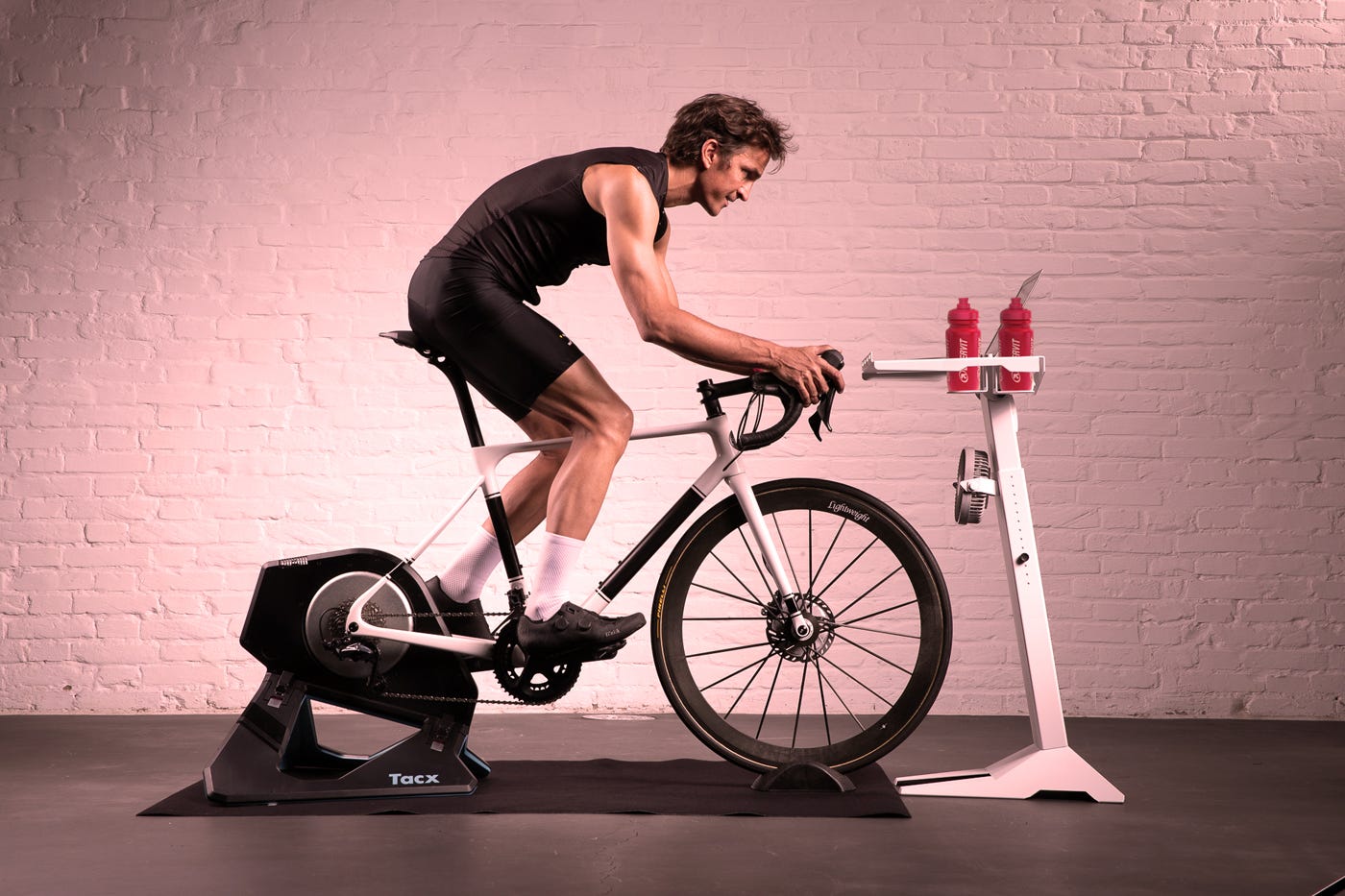Indoor cycling and nutrition
How to best support your performance
Until a few years ago, training on smart trainers (commonly known as 'rollers') was considered an 'alternative' activity to road cycling, mostly done in winter or on bad weather days. However, nowadays, cycling 'on rollers' is an integral part of the athletic preparation for many cyclists.

Cycling on smart trainers, thanks to the emergence of new interactive virtual cycling platforms, has become a true must for cycling enthusiasts. They can not only train, but also participate in real indoor competitions.
What does indoor cycling entail?
Before introducing various strategies to enhance performance during indoor cycling sessions, let's first understand what it means to pedal indoors. Physiologically, pedalling on smart trainers leads to greater energy expenditure (higher calorie consumption) compared to a similar training session on the road. This is because, during indoor cycling, the pedalling remains uninterrupted (unlike outdoor cycling, where interruptions occur, such as during descents or at traffic light).
Beyond this, the increased energy expenditure and the perceived greater fatigue, are often due to the rise in internal body temperature. When stationary, the humid air around us (heated by the body's warmth) isn’t replaced by "fresh dry air" capable of absorbing more heat, as it happens when we're in motion. That's why it's always recommended to train in well-ventilated environments or with the aid of a fan. These two components — the increased mechanical work and the rise in body temperature — if not adequately supported by specific nutrition and supplementation strategies, can lead to an earlier decline in performance compared to what would occur if the same workout were done outdoors.
How can we counteract the performance decline in indoor cycling?
Understanding that the decline in performance is often due to the excessive increase in body temperature, it's crucial to support the body in the thermoregulation process. This occurs through sweating.
Sweat, evaporating from the skin, absorbs a considerable amount of heat (2430 kJ/L) and leads to significant body cooling. Therefore, it's essential to facilitate sweating as much as possible and assist the body in this process.
How can we support the body in the sweating process?
Certainly, proper hydration during performance is crucial to promote adequate sweating, but this may often not be sufficient and could be limiting. Intervening before the start of the performance by pre-hydrating can be the winning strategy.

Pre-hydration will allow us to begin our activity well-hydrated, having more water available to allocate to the sweating process: we will be able to dissipate more heat.
How to perform pre-hydration?
Pre-hydration strategies certainly involve proper water intake in the hours leading up to the activity; however, water alone isn't sufficient. To ensure our body retains the water introduced before the activity, it's essential to add minerals to the water we consume, particularly sodium, the mineral capable of retaining water.
To ensure the right balance between water and minerals, it can be helpful to consume isotonic drinks in the two to three hours preceding our workout or race.

What should we do during activity?
During activities performed in hot/humid conditions, ensuring the right amount of carbohydrates is crucial to support optimal performance, especially during intense activities exceeding 60 minutes. Activity in hot and humid conditions leads to increased glycogen (sugar) consumption, compared to the same activity performed at lower temperatures. Sipping isotonic drinks containing carbohydrates is helpful to provide both energy support and meets hydration needs.

What about after the activity?
To perform well in the long term, it's crucial to recover effectively between training sessions or races, especially if they are close together. It will be necessary to consume carbohydrates to replenish glycogen reserves. These carbohydrates should ideally come from highly digestible sources, like maltodextrin.

Additionally, adding a highly digestible protein source will be beneficial: about 20 grams of whey protein will support us both in muscle recovery (promoting protein synthesis) and in the speed of glycogen resynthesis.

Remember, these suggestions play a significant role in performance, especially during endurance activities or high-intensity exercises, aiding in maintaining energy levels and facilitating recovery.





